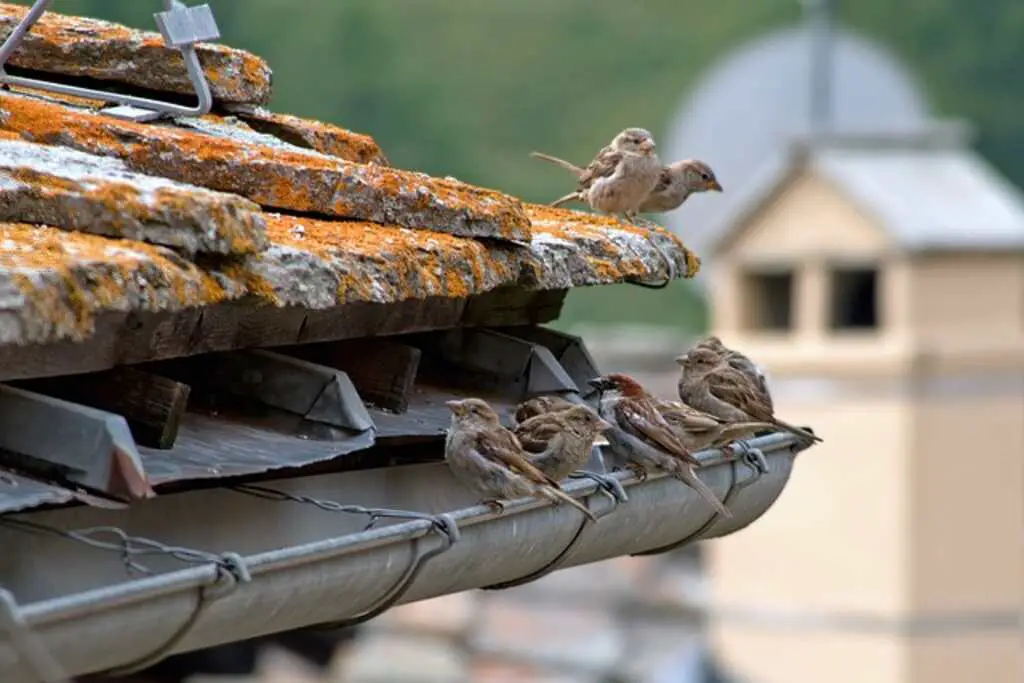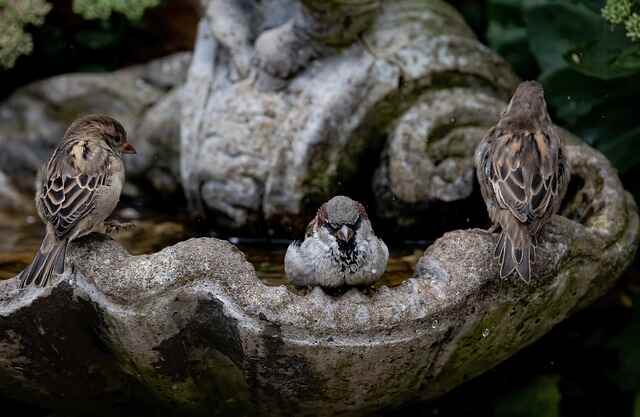
Sparrows, with their messy nests and noisy chirping, can quickly become a backyard nuisance. If you’re seeking effective ways to eliminate them, you’re in the right place. Discover 12 powerful strategies to reclaim your space from sparrows in this article.
From cutting off food sources to employing visual deterrents, we’ll cover a variety of methods suitable for any scale of infestation. Dive in and reclaim your peaceful property today.
Table of Contents
- 1 Why Sparrows Are Pests?
- 2 Understanding Sparrow Habits
- 3 Sparrow Problems and Their Effects on Native Birds
- 4 Most Common Types of Sparrows
- 5 How to Get Rid of Sparrows?
- 5.1 1. Feeder Modifications: A Sparrow-Free Solution
- 5.2 2. Discourage Sparrows with Less Inviting Water Sources
- 5.3 3. Removing Food and Shelter Sources
- 5.4 4. Humane Traps for Catch-and-Release
- 5.5 5. Creating Barriers to Keep Sparrows Out
- 5.6 6. Sound-Based Deterrents
- 5.7 7. Physical Deterrents to Prevent Nesting
- 5.8 8. Repellent Sprays and Scents
- 5.9 9. Vegetation for Natural Deterrents
- 5.10 10. Community Education for Control
- 5.11 11. Professional Assistance for Removal
- 5.12 12. Ethical Considerations for Control
- 6 Conclusion
- 7 Frequently Asked Questions
- 7.1 How do birds feed their young?
- 7.2 How to make poison for sparrows?
- 7.3 Homemade sparrow repellent?
- 7.4 How to get rid of sparrows but not other birds?
- 7.5 Why are house sparrows bad?
- 7.6 How to get rid of sparrows in a barn?
- 7.7 How to get rid of house sparrows at feeders?
- 7.8 How to get rid of sparrows in the roof?
- 7.9 How to get rid of sparrows nesting in awning?
- 7.10 How to get rid of sparrows on porch?
- 7.11 How to get rid of sparrows in bluebird house?
- 7.12 How to get rid of sparrows in your yard?
- 7.13 How to get rid of sparrows in shed?
- 8 Author
Why Sparrows Are Pests?
Sparrows are considered pests because they are highly adaptable and reproduce quickly, making them a nuisance for homeowners and farmers alike. They can damage crops, steal livestock feed, and spread disease through their droppings. Sparrows are also known to aggressively displace other native bird species from their nesting sites, further disrupting local ecosystems.
In addition to their destructive behavior, sparrows are noisy and persistent, often causing disturbances with their constant chirping and aggressive behavior towards other birds. As a result, it’s important to take proactive measures to control their populations and minimize the damage they can cause.
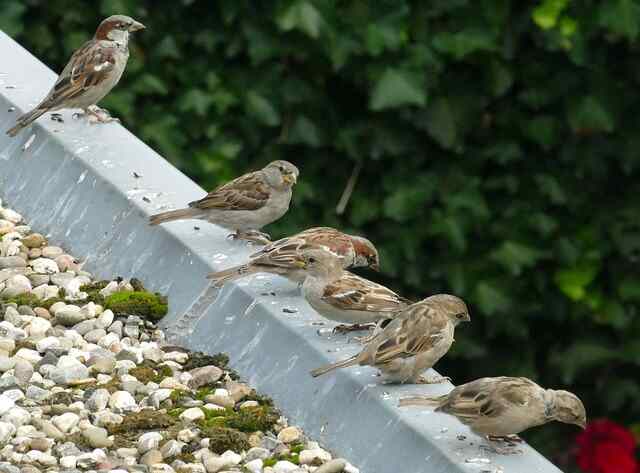
Understanding Sparrow Habits
Understanding the habits of sparrows is crucial in effectively controlling their populations. Sparrows are small, active birds that thrive in urban and suburban areas. They are known for their adaptability, and can be found in a wide variety of habitats, from parks and gardens to farmland and open fields.
Sparrows are opportunistic feeders, and will consume a variety of foods, including grains, seeds, insects, and small fruits. They are particularly attracted to backyard bird feeders and can quickly become a nuisance if left unchecked. It’s important to note that sparrows are social birds and tend to congregate in large flocks, making their presence even more noticeable and disruptive.
Sparrows also have a strong nesting instinct and will build their nests in a variety of locations, including trees, shrubs, and building crevices. They typically breed in the spring and summer months, and their nests can house several chicks at a time. If left uncontrolled, a sparrow population can quickly grow out of hand and cause significant damage to crops and property.
To effectively control sparrows, it’s important to understand their habits and preferences. By removing food and shelter sources, creating barriers, and implementing deterrents, it is possible to reduce sparrow populations and prevent further damage.
It’s important to note that humane methods should always be used to control sparrow populations, and that professional assistance may be necessary in some cases.
| Aspect | Description |
|---|---|
| Habitat | Urban and suburban areas, parks, gardens, farmland, open fields |
| Diet | Grains, seeds, insects, small fruits |
| Nesting | Trees, shrubs, building crevices; typically April through August |
| Breeding | Spring and summer months |
| Social behavior | Congregate in large flocks |
| Potential damage | Nuisance at bird feeders, property damage, crop damage |
| Control methods | Remove food and shelter sources, create barriers, implement deterrents, use humane methods |
Sparrow Problems and Their Effects on Native Birds
House sparrows are known to be one of the most aggressive bird species, causing numerous problems for other birds, especially the native ones. They often compete for nesting sites, food sources, and water, and can even kill adult birds, hatchlings, and eggs.
The house sparrow’s aggressive and bullying behavior can lead to the displacement of vulnerable bird species such as Eastern and Western Bluebirds, Purple Martins, Tree and Cliff Swallows, Orioles, Chickadees, and Finches.
Additionally, the house sparrows’ tendency to monopolize food sources and reduce diversity at feeders can lead to a decline in other bird populations. This makes it essential to understand the problems caused by house sparrows and take effective measures to control their population.
| Bird Species | Impact of House Sparrows |
|---|---|
| Eastern Bluebird | Competes for nesting sites and may kill adult birds, hatchlings, and eggs |
| Western Bluebird | Competes for nesting sites and may kill adult birds, hatchlings, and eggs |
| Purple Martin | Competes for nesting sites and may kill adult birds, hatchlings, and eggs |
| Tree Swallow | Competes for nesting sites and may kill adult birds, hatchlings, and eggs |
| Cliff Swallow | Competes for nesting sites and may kill adult birds, hatchlings, and eggs |
| House Finch | May be bullied at feeding stations, leading to reduced food intake |
| American Goldfinch | May be bullied at feeding stations, leading to reduced food intake |
| Black-capped Chickadee | May be bullied at feeders, reducing their food intake |
Most Common Types of Sparrows
There are several types of sparrows, but some of the most common species found in North America are:
- House Sparrows (Passer domesticus)
- Song Sparrows (Melospiza melodia)
- Chipping Sparrows (Spizella passerina)
- White-throated Sparrows (Zonotrichia albicollis)
- White-crowned Sparrows (Zonotrichia leucophrys)
- Savannah Sparrows (Passerculus sandwichensis)
- American Tree Sparrows (Spizelloides arborea)
- Fox Sparrows (Passerella iliaca)
- Dark-eyed Juncos (Junco hyemalis)
These sparrows have different physical characteristics and habitats, but they can all become a nuisance if they infest your property. It’s important to identify the type of sparrow you’re dealing with to choose the most effective method to control their presence.
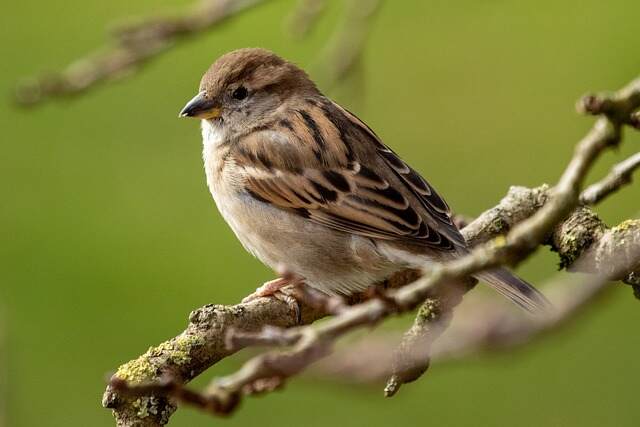
How to Get Rid of Sparrows?
1. Feeder Modifications: A Sparrow-Free Solution
Changing your feeder type can be an effective way to discourage sparrows from congregating on your property. Sparrows are attracted to small seed types, such as millet and sunflower seeds, and will often monopolize feeders that contain these types of seed.
By switching to a larger feeder with bigger seed ports, you can make it more difficult for sparrows to feed while allowing larger birds, such as cardinals and finches, to still access the feeder.
Additionally, using a caged feeder or placing a wire mesh cylinder around your feeder can also limit access for sparrows while still allowing other bird species to feed.
Here’s a table that compares different feeder styles for sparrow control:
| Feeder Style | Effectiveness in Deterring Sparrows | Pros | Cons |
|---|---|---|---|
| Small Tube | Least effective | Inexpensive, easy to maintain | Allows sparrows to monopolize the feeder |
| Small Hopper | Less effective | Can accommodate multiple birds at once | Sparrows can still access the seeds |
| Large Hopper | Moderately effective | Accommodates larger birds, can hold more seeds | Still allows some access for sparrows |
| Large Tube | Moderately effective | Can accommodate larger birds, holds more seeds | Sparrows can still access the seeds |
| Caged | Very effective | Limits access for sparrows, allows larger birds to feed | More expensive, may require more maintenance |
| Mesh Cylinder | Very effective | Limits access for sparrows, allows larger birds to feed | May require more maintenance |
Using this table, you can easily compare the different feeder styles for sparrow control and choose the one that best fits your needs and budget.
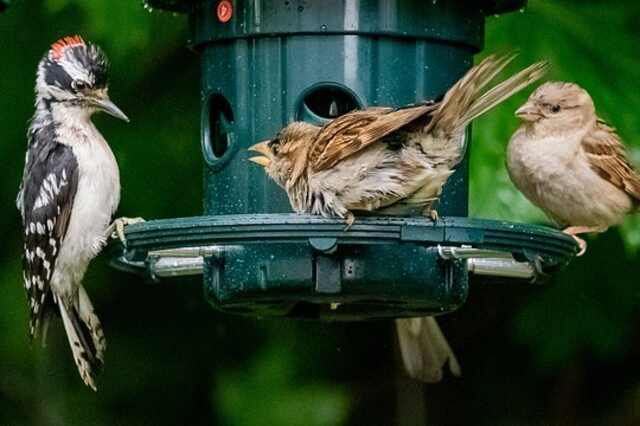
2. Discourage Sparrows with Less Inviting Water Sources
One effective way to deter sparrows from your property is to make water sources less attractive to them. Sparrows are attracted to areas with abundant water, particularly for drinking and bathing. Therefore, it’s important to reduce their access to water.
To make water less sparrow-friendly, you can implement some of the following measures:
- Cover or drain birdbaths when not in use.
- Keep swimming pools, fountains, and other water features clean and free of debris.
- Use motion-activated sprinklers to startle birds and prevent them from landing in or near water.
- Install bird netting over ponds and other water features to prevent birds from accessing the water.
- Position mirrors near water sources to create an illusion of danger and deter birds from landing.
Table: Ways to Make Water Less Sparrow-friendly
| Measure | Effectiveness Rating* |
|---|---|
| Cover or drain birdbaths | Moderate |
| Keep swimming pools and water features clean and debris-free | Moderate |
| Use motion-activated sprinklers | High |
| Install bird netting | High |
| Position mirrors | Low to moderate |
*Effectiveness Rating:
- Low: May have limited or no effect
- Moderate: May have some effect, but not guaranteed to work
- High: Likely to be effective in deterring sparrows
Implementing multiple measures, especially those with a high effectiveness rating, can increase the chances of success in making water less attractive to sparrows.
By reducing access to water, you can discourage sparrows from settling on your property. While some measures are more effective than others, implementing multiple approaches can increase the chances of success.
3. Removing Food and Shelter Sources
When it comes to controlling sparrow populations, one effective strategy is to remove their sources of food and shelter. Sparrows tend to gather and nest in areas with an abundance of food and shelter, so by limiting their access to these resources, you can discourage their presence on your property.
To begin, start by cleaning up any spilled birdseed or food scraps, as these can attract sparrows and other unwanted birds. Consider using a bird feeder that is specifically designed to exclude sparrows, or one that is elevated to deter ground-feeding birds.
In addition to food sources, sparrows also require shelter for nesting and roosting. Take a close look at your property and identify any potential nesting sites, such as dense vegetation, shrubs, or trees. Consider pruning or removing these areas to make them less hospitable to sparrows.
It’s important to note that removing food and shelter sources should be done in a humane and ethical manner. Avoid harming any birds in the process, and be sure to follow all local laws and regulations regarding wildlife control.
By taking steps to remove food and shelter sources, you can make your property less attractive to sparrows and reduce their presence in your outdoor space.
| Strategy | Description |
|---|---|
| Clean up spilled food | Remove any birdseed or food scraps that could attract sparrows |
| Use a sparrow-proof bird feeder | Use a feeder designed to exclude sparrows, or elevate the feeder to deter ground-feeding birds |
| Remove potential nesting sites | Identify and prune or remove dense vegetation, shrubs, or trees where sparrows may nest or roost |
| Follow local laws and regulations | Ensure all wildlife control methods are humane and ethical, and comply with all relevant laws and regulations |
Implementing these strategies can help reduce the presence of sparrows on your property by removing their sources of food and shelter.
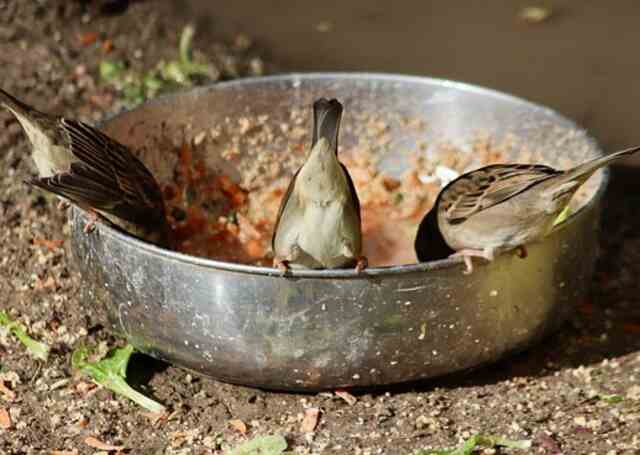
4. Humane Traps for Catch-and-Release
While many methods for sparrow control involve deterrents and exclusion techniques, trapping and releasing the birds can be an effective option for those who want to avoid harm to the birds. However, it’s important to use humane traps that don’t injure or harm the birds during capture.
Humane traps come in various sizes and styles and are designed to capture sparrows without causing them harm. Below are some options available on Amazon. Several of the most frequently utilized traps are:
- Live traps: These live traps are small cages that allow birds to enter but prevent them from leaving. Once trapped, the birds can be safely released elsewhere.
- Funnel traps: These traps use a funnel-shaped entrance that leads to a closed chamber where the birds are trapped. They can then be released elsewhere.
- Drop traps: These traps involve a hinged platform that drops down when the bird lands on it, trapping the bird inside the closed box below.
When using traps, it’s important to follow some basic guidelines to ensure the safety of the birds:
- Check traps frequently to ensure that trapped birds are released as soon as possible.
- Place traps in shaded areas to avoid exposing trapped birds to direct sunlight.
- Provide water and food for trapped birds if they will be held for an extended period.
- Release birds at least several miles away from the capture site to avoid them returning.
Here is a small table summarizing some commonly used humane traps for catching and releasing sparrows:
| Trap Type | Description | Pros | Cons |
|---|---|---|---|
| Live Traps | Small cages with a trigger mechanism that closes the door behind the bird | Humane and easy to use | May not be effective for large sparrow populations |
| Funnel Traps | Uses a funnel-shaped entrance to a closed chamber where the birds are trapped | Effective for catching multiple birds at once | Can be expensive and difficult to set up |
| Drop Traps | Hinged platform that drops down when the bird lands on it, trapping the bird inside the closed box below | Effective for catching birds in flight | Requires careful placement to avoid injury to birds |

5. Creating Barriers to Keep Sparrows Out
Creating physical barriers is an effective way to keep sparrows out of certain areas of your property. This can involve placing netting, mesh, or wire around areas where sparrows are prone to gather, roost, or nest.
Here are some options available on Amazon for creating barriers to keep sparrows out:
- Netting: Bird netting is a fine, mesh-like material that can be used to cover areas like gardens, patios, or balconies. Sparrows will not be able to enter through the netting, but it’s important to make sure that there are no gaps or holes for them to sneak through. Additionally, it’s important to keep in mind that netting can also entangle birds and other wildlife, so it should be used with caution.
- Mesh: Similar to netting, mesh can be used to cover openings like vents or chimneys to prevent sparrows from entering. Mesh should be made of a durable material, such as stainless steel or copper, and have small enough openings to prevent sparrows from squeezing through.
- Wire: Wire mesh can be used to create barriers around areas like roofs, eaves, or attics where sparrows are known to build nests. The wire mesh should be installed at an angle to prevent sparrows from perching on top and gaining access.
- Spikes: Spike strips can be placed along ledges, window sills, or other flat surfaces to prevent sparrows from landing and roosting. The spikes are not harmful to birds, but they make it difficult for them to perch and nest.
- Electric shock systems: These electric shock systems use a mild electric shock to deter birds from landing and roosting in certain areas. While they are effective, they can be expensive and require professional installation.
Table: Creating Barriers to Keep Sparrows Out
| Barrier Type | Pros | Cons |
|---|---|---|
| Netting | Effective at covering large areas | Can entangle birds and wildlife |
| Mesh | Durable and can cover small openings | Must have small enough openings to prevent sparrows from entering |
| Wire | Effective at preventing nesting | Must be installed at an angle to prevent perching |
| Spikes | Harmless to birds and effective at preventing roosting | Must be placed strategically |
| Electric shock systems | Effective at deterring birds | Expensive and requires professional installation |
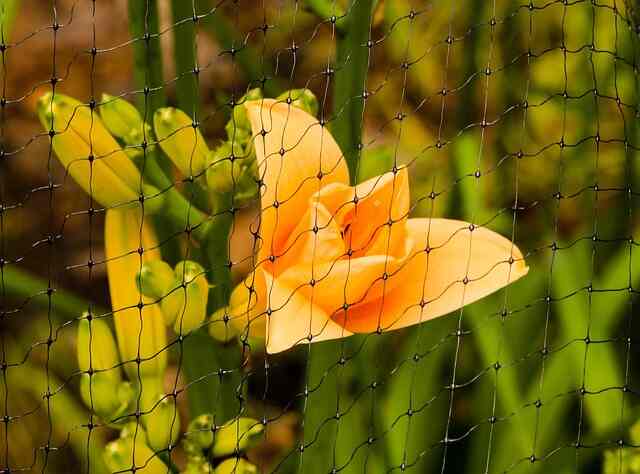
6. Sound-Based Deterrents
Sparrows are sensitive to sound and can be deterred by certain noises. Sound-based deterrents emit high-pitched noises or sounds that mimic predator calls to scare away sparrows. These are effective when used in conjunction with other control methods.
There are various types of sound-based deterrents available in the market. Some devices are programmable and can emit different sounds at different times of the day to prevent habituation. Here are some common sound-based deterrents that are available on Amazon:
| Device Name | Features | Price Range |
|---|---|---|
| Ultrasonic bird repellent | Emits high-frequency sound waves that scare birds away | $30-$100 |
| Bird distress call | Mimics the sound of distressed birds to scare sparrows away | $5-$20 |
| Bird alarm | Emits loud noises that mimic predator calls to scare sparrows away | $15-$30 |
| Sonic bird repellent | Emits high-frequency sound waves that are audible to birds only | $30-$80 |
| Motion-activated noise makers | Emits loud noises when birds come into range | $20-$60 |
It’s important to note that sound-based deterrents may not work for all species of sparrows, and may be less effective in areas with high ambient noise. It’s also crucial to use sound-based deterrents in a responsible and humane manner, avoiding excessive noise levels that could be harmful to both birds and humans.
When using sound-based deterrents, it’s recommended to rotate between different types of sounds to prevent habituation. Additionally, placing the devices strategically in areas frequented by sparrows can increase their effectiveness.
7. Physical Deterrents to Prevent Nesting
Sparrows tend to nest in small spaces, making them difficult to deter with sound-based or scent-based repellents. Physical barriers are often the most effective way to prevent sparrows from building nests on your property. Here are some common physical deterrents for preventing nesting:
- Bird Spikes: These are small, needle-like spikes that are attached to surfaces where birds like to land and nest. They make it uncomfortable for birds to perch or build nests on these surfaces. Bird spikes come in different sizes and materials, such as plastic, stainless steel, or PVC.
- Bird Netting: This is a physical barrier made of plastic or nylon mesh that can be used to cover plants, crops, or other areas where sparrows might build nests. Bird netting is often used in orchards, gardens, or other outdoor areas.
- Bird Slopes: These are angled surfaces that make it difficult for birds to land or build nests on roofs, ledges, or other surfaces. Bird slopes are usually made of plastic or metal.
- Bird Wire: This is a thin wire that is strung between posts or poles to create a barrier that prevents birds from landing or perching. Bird wire is often used to protect signs, statues, or other structures from bird damage.
Table: Physical Deterrents to Prevent Nesting
| Deterrent | Description | Pros | Cons |
|---|---|---|---|
| Bird Spikes | Needle-like spikes attached to surfaces | Effective, humane | Need to be installed properly |
| Bird Netting | Plastic or nylon mesh barrier | Versatile, reusable | Can be costly, may require maintenance |
| Bird Slopes | Angled surfaces that prevent nesting | Cost-effective, easy to install | May not work on all surfaces |
| Bird Wire | Thin wire strung between poles or posts | Low profile, effective | Requires proper installation |
Overall, physical deterrents can be highly effective in preventing sparrows from nesting on your property. Choosing the right deterrent will depend on the area you are trying to protect and your specific needs. It’s important to install physical deterrents properly and maintain them regularly to ensure their effectiveness.

8. Repellent Sprays and Scents
Repellent sprays and scents are an effective and safe way to keep sparrows away from your property. These products work by emitting unpleasant odors or tastes that sparrows find unappealing. When used correctly, repellent sprays and scents can deter sparrows without harming them or other wildlife.
Here are some of the most effective repellent sprays and scents available on Amazon for sparrow control:
| Product Name | Active Ingredients | Effectiveness |
|---|---|---|
| Avian Control Bird Repellent | Methyl anthranilate | Highly Effective |
| Bird-X Bird Proof Gel | Polybutene | Highly Effective |
| Nixalite PiGNX Bird Repellent | Mineral Oil, Capsaicin | Highly Effective |
| Liquid Fence Bird Repellent | Garlic oil | Moderately Effective |
| Bird B Gone Sonic Shield | Recorded predator sounds | Moderately Effective |
It’s important to note that some repellent sprays and scents may not be effective for all situations. Factors such as the size of your property, the severity of your sparrow infestation, and the sparrow species present may all impact the effectiveness of these products. It’s important to follow the instructions carefully and to use these products in conjunction with other sparrow control methods for the best results.
When using repellent sprays and scents, always choose products that are safe for humans and other wildlife. Avoid using chemical-based sprays that may be harmful to the environment or other animals. Additionally, be sure to apply these products in a manner that does not harm beneficial birds or insects. With the right approach, repellent sprays and scents can be a useful tool in your sparrow control arsenal.
9. Vegetation for Natural Deterrents
Planting certain types of vegetation can help naturally deter sparrows from your property. Sparrows tend to avoid areas with dense and prickly vegetation, as they prefer open spaces where they can easily forage for food. Here are some plant options to consider:
| Type of Plant | Description |
|---|---|
| Holly | Evergreen shrubs with prickly leaves and red berries |
| Barberry | Thorny shrubs with yellow flowers and red berries |
| Pyracantha | Thorny shrubs with white flowers and orange berries |
| Spruce | Coniferous trees with prickly needles |
| Juniper | Evergreen shrubs with prickly foliage and blue berries |
In addition to providing natural deterrents, these plants also offer aesthetic benefits to your property. By strategically planting these types of vegetation around your home, garden, and outdoor areas, you can help discourage sparrows from nesting and foraging in your space. Keep in mind that it may take time for the plants to grow and have an effect on sparrow behavior, so be patient and consistent in your efforts.
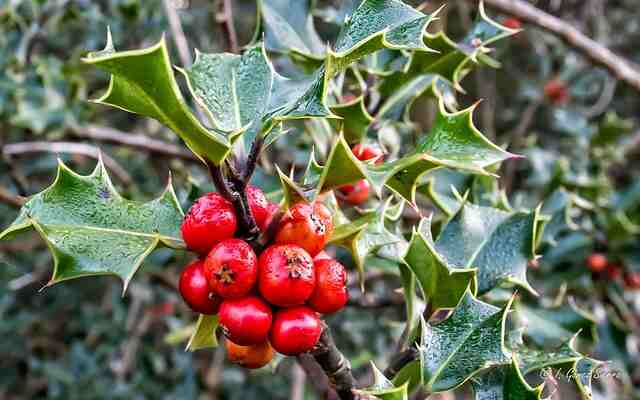
10. Community Education for Control
One effective approach to controlling sparrow populations is through community education. By educating the public about the harmful effects of sparrows and how to control them, individuals and communities can take proactive steps to reduce sparrow populations and prevent future infestations.
Community education can involve a variety of methods, including workshops, seminars, and informational materials such as flyers or brochures. It is important to provide accurate and reliable information on sparrow behavior, habits, and control methods.
This can include information on the use of physical barriers, sound-based deterrents, and vegetation for natural sparrow control. Additionally, community education should emphasize humane and ethical methods for controlling sparrows, such as catch-and-release trapping.
A small but useful table outlining the benefits of community education for sparrow control is provided below:
| Benefits of Community Education for Sparrow Control |
|---|
| – Increases awareness of sparrow behavior and habits |
| – Provides accurate information on control methods |
| – Promotes humane and ethical control practices |
| – Encourages community participation in control |
| – Reduces the risk of future sparrow infestations |
By promoting community education and involvement in sparrow control efforts, individuals and communities can work together to effectively reduce sparrow populations and mitigate the damage they can cause.

11. Professional Assistance for Removal
While many of the strategies listed above can be effective for managing sparrow populations, sometimes the infestation may be too severe to handle on your own. In such cases, it may be necessary to seek professional assistance for sparrow removal.
Professional pest control companies have access to specialized tools and expertise that can help you effectively control sparrows without causing harm to the birds or the environment. These companies can also offer additional advice on how to prevent future sparrow infestations.
When choosing a professional pest control company, it is important to select one with experience in dealing with sparrow infestations specifically. Look for companies that use humane methods and have a good reputation for their services.
Here is a small but useful table summarizing the key factors to consider when selecting a professional pest control company for sparrow removal:
| Factors to Consider | Description |
|---|---|
| Experience | Look for companies with experience in sparrow removal. |
| Methods | Choose a company that uses humane methods for sparrow control. |
| Reputation | Research the company’s reputation for quality services. |
| Licensing and Insurance | Ensure that the company is licensed and has insurance coverage. |
| Cost | Compare costs of different companies and choose one that fits your budget. |
Overall, seeking professional assistance can be a helpful step in effectively removing sparrows from your property and preventing future infestations.
12. Ethical Considerations for Control
While controlling sparrow populations is often necessary to protect property and prevent damage, it is important to consider the ethical implications of these methods. Here are some important ethical considerations to bear in mind:
- The use of lethal methods such as poisoning or shooting should only be considered as a last resort, and only by licensed professionals. These methods can cause suffering and harm to non-target animals, and may also harm the environment.
- Humane methods such as trapping and relocation should only be done in accordance with local laws and regulations. Relocating sparrows to an unsuitable habitat can be stressful and may even be lethal to the birds.
- Any sound or physical deterrents used should not cause unnecessary harm or distress to the birds. For example, sonic deterrents should not be used at high volumes that could damage the birds’ hearing.
- Consider using natural deterrents such as vegetation or physical barriers before resorting to more aggressive methods.
- Remember that sparrows are living creatures with an important role in the ecosystem. Efforts should be made to control populations in a way that minimizes harm to the birds and the environment.
Table: Ethical Considerations for Sparrow Control
| Consideration | Explanation |
|---|---|
| Use of Lethal Methods | Should be a last resort and only used by licensed professionals |
| Humane Trapping and Relocation | Should be done in accordance with local laws and regulations |
| Sound and Physical Deterrents | Should not cause unnecessary harm or distress |
| Natural Deterrents | Should be considered before more aggressive methods |
| Sparrows as Living Creatures | Efforts should be made to minimize harm to birds and the environment |
By keeping these ethical considerations in mind, we can ensure that sparrow control methods are effective and humane.
Conclusion
In conclusion, sparrows may be charming creatures, but when they start to become a nuisance, it’s important to take action to get rid of them. With the 12 effective strategies we’ve shared in this article, you should have plenty of options to choose from to solve your sparrow yard problem.
Remember, prevention is key, so be sure to remove any potential food sources and block off any access points to nesting areas. And when it comes to control methods, it’s essential to consider the ethical implications and choose the most humane option possible.
With some persistence and a little creativity, you can successfully eliminate sparrows from your property and enjoy a more peaceful and bird-free environment.
Frequently Asked Questions
How do birds feed their young?
Mother birds feed their offspring by bringing up food from their own stomachs and depositing it directly into their babies’ mouths, a process known as regurgitation. The regurgitated food is usually pre-digested and easier for the young birds to digest. The method and frequency of feeding vary depending on the species and the age of the young birds.
How to make poison for sparrows?
It is not recommended to make poison for sparrows as it can harm not only the targeted birds but also other wildlife and pets. Using poison to control bird populations is also illegal in many countries. Instead, humane methods such as trapping and relocation, deterrents, and habitat modification should be considered.
Homemade sparrow repellent?
Homemade sparrow repellents can be made from ingredients such as vinegar, chili peppers, and essential oils. However, the effectiveness of these repellents is not scientifically proven, and some may even harm other beneficial bird species. It is important to research and use repellents carefully and ethically.
How to get rid of sparrows but not other birds?
Since many bird species share similar habitats, it can be challenging to get rid of sparrows without harming other birds. The best approach is to use non-lethal methods such as exclusion devices, habitat modification, and deterrents specific to the species. In certain instances, seeking assistance from a professional may be required.
Why are house sparrows bad?
House sparrows are considered invasive species in many regions because they compete with native birds for food and habitat, and can displace them. In addition, they can cause harm to both crops and structures. However, it is important to remember that all bird species play an important role in the ecosystem and should be treated with respect.
How to get rid of sparrows in a barn?
To get rid of sparrows in a barn, exclusion methods such as netting, screens, and sealants can be used to prevent them from entering. Trapping and relocating the birds may also be an option, but it should be done ethically and with proper permits if required.
How to get rid of house sparrows at feeders?
Deterrents such as physical barriers and sound devices can be used to discourage house sparrows from using feeders. Cleaning up spilled seed regularly and switching to feeders that are less attractive to house sparrows may also help.
How to get rid of sparrows in the roof?
Exclusion methods such as sealing gaps and holes can prevent sparrows from nesting in the roof. Trimming nearby trees and using deterrents such as visual and sound devices can also discourage them from the area.
How to get rid of sparrows nesting in awning?
Removing the nest and using exclusion methods such as netting or screening can prevent sparrows from nesting in awnings. Deterrents such as reflective materials and sound devices may also be effective.
How to get rid of sparrows on porch?
Deterrents such as visual and sound devices can be used to discourage sparrows from using the porch. Removing food sources and nesting sites, such as plants and birdhouses, can also help.
How to get rid of sparrows in bluebird house?
Exclusion methods such as a modified entrance hole can prevent sparrows from entering bluebird houses. Trapping and relocating the birds may also be an option, but it should be done ethically and with proper permits if required.
How to get rid of sparrows in your yard?
Removing food sources and nesting sites, such as plants and birdhouses, can discourage sparrows from using your yard. Deterrents such as visual and sound devices may also be effective. It is important to remember that birds play a vital role in the ecosystem and that humane methods should be used.
How to get rid of sparrows in shed?
To get rid of sparrows in your shed, the first step is to remove any food sources that might be attracting them. Sparrows are notorious for scavenging food scraps and seeds, so make sure to store any birdseed or pet food in sealed containers.
You can also use a humane trap to catch and release them elsewhere. Another option is to use a sparrow repellent, which can be purchased or made at home using ingredients like cayenne pepper, garlic, or vinegar. It’s important to note that killing sparrows is not only cruel, but also illegal in many places.
Related Post: How to Get Rid of Crows: 12 Proven Strategies

